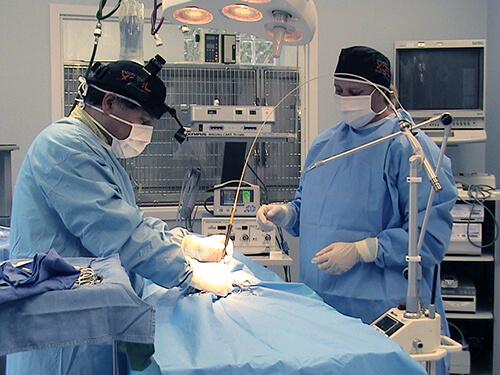
What are the benefits of laser surgery for my pet?
There are three major advantages of laser surgery when compared to traditional stainless steel surgical scalpels– decreased pain, reduced bleeding and blood loss, and reduced risk of infection.
Decreased post-operative pain is accomplished when the laser seals the nerve endings as it cuts. This reduces pain impulses from the surgery site in the immediate post-operative period. Also, the decreased pain involved with laser surgery may allow the surgeon to remove small skin tumors using local anesthesia rather than having the pet undergo general anesthesia.
Reduced bleeding and blood loss is achieved through cauterization of blood vessels as the laser beam vaporizes the tissues.
Reduced risk of surgical infection occurs due to the superheating of the tissues in the incision site, destroying any bacteria that are present at the time of surgery.
What surgeries can be performed with the laser?
Almost any soft-tissue surgery may be performed with the CO2 laser. Routine procedures such as ovariohysterectomy (spay) or castration (neutering) are commonly done with the laser. The CO2 laser is also used for skin tumor removal, eyelid surgery such as correction of entropion or ectropion, and some mouth and throat procedures. Your veterinarian will discuss whether CO2 laser is appropriate for use during your pet's surgery.

